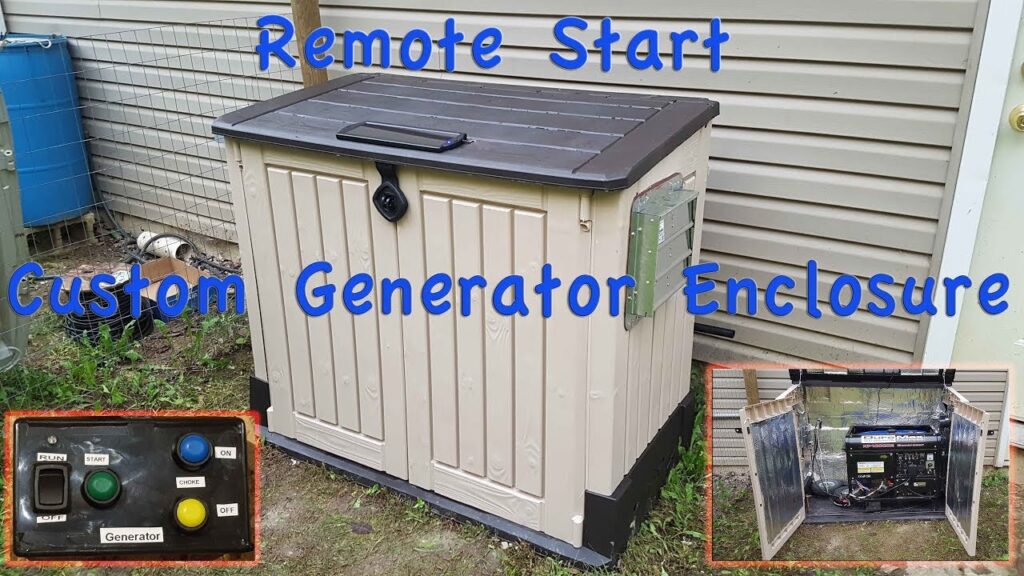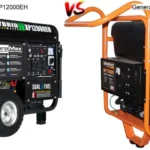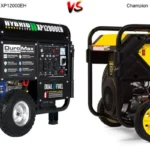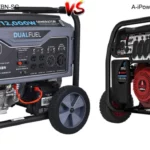Outdoor generator storage can be a tricky business, especially if you don’t know the ins and outs of keeping your generator safe and secure. To make sure your generator is properly stored and maintained, it’s important to understand the basics of outdoor generator storage. In this article, we’ll cover what you need to know to keep your generator safe and secure in any outdoor environment.
Types of Outdoor Generator Storage

Sheds
Sheds are an ideal way to store a generator outdoors. A well-built shed will protect the generator from rain, snow, and other weather elements. Sheds also provide a secure place to store the generator, as they can be locked and out of sight so that the generator won’t be a target for thieves.
Covers
Generator covers are another option for storing a generator outdoors. Generator covers can be fit to the size and shape of the generator, and are designed to provide protection from the elements. Covers also provide some security, as they can help to conceal the generator and make it less of a target for thieves.
Enclosures
Enclosures are another option for outdoor generator storage. Enclosures are typically made from a metal frame and sheet metal sides and roof, and are designed to provide protection from the elements. Enclosures can be more secure than sheds or covers, as they can be locked to provide additional protection from thieves.
Benefits of Outdoor Generator Storage

Outdoor generator storage is a great option for storing and protecting portable generators from the elements. Here are some of the main benefits of using an outdoor generator storage container:
- Protection from the elements: An outdoor generator storage container helps protect your generator from the wind, rain, snow, and other elements that can damage the generator and its components.
- Easy access: An outdoor generator storage container makes it easy to access your generator when you need it. It also ensures that your generator is securely stored and protected while not in use.
- Security: An outdoor generator storage container provides a physical barrier between your valuable generator and potential thieves or other people who might want to access it.
- Safety: Keeping your generator in a secure, well-ventilated container helps protect it from fire hazards and other safety risks that can come with storing it in an enclosed space.
- Durability: An outdoor generator storage container is designed to be durable and to last for years. It also helps protect your generator from corrosion, rust, and other damage that can occur from prolonged exposure to the elements.
- Convenience: An outdoor generator storage container makes it easy to move your generator wherever you need it. This makes it particularly convenient for those who need to use their generator in multiple locations.
Overall, an outdoor generator storage container is an excellent option for storing and protecting your generator. It provides protection from the elements, easy access, security, safety, durability, and convenience.
Considerations for Choosing Outdoor Generator Storage
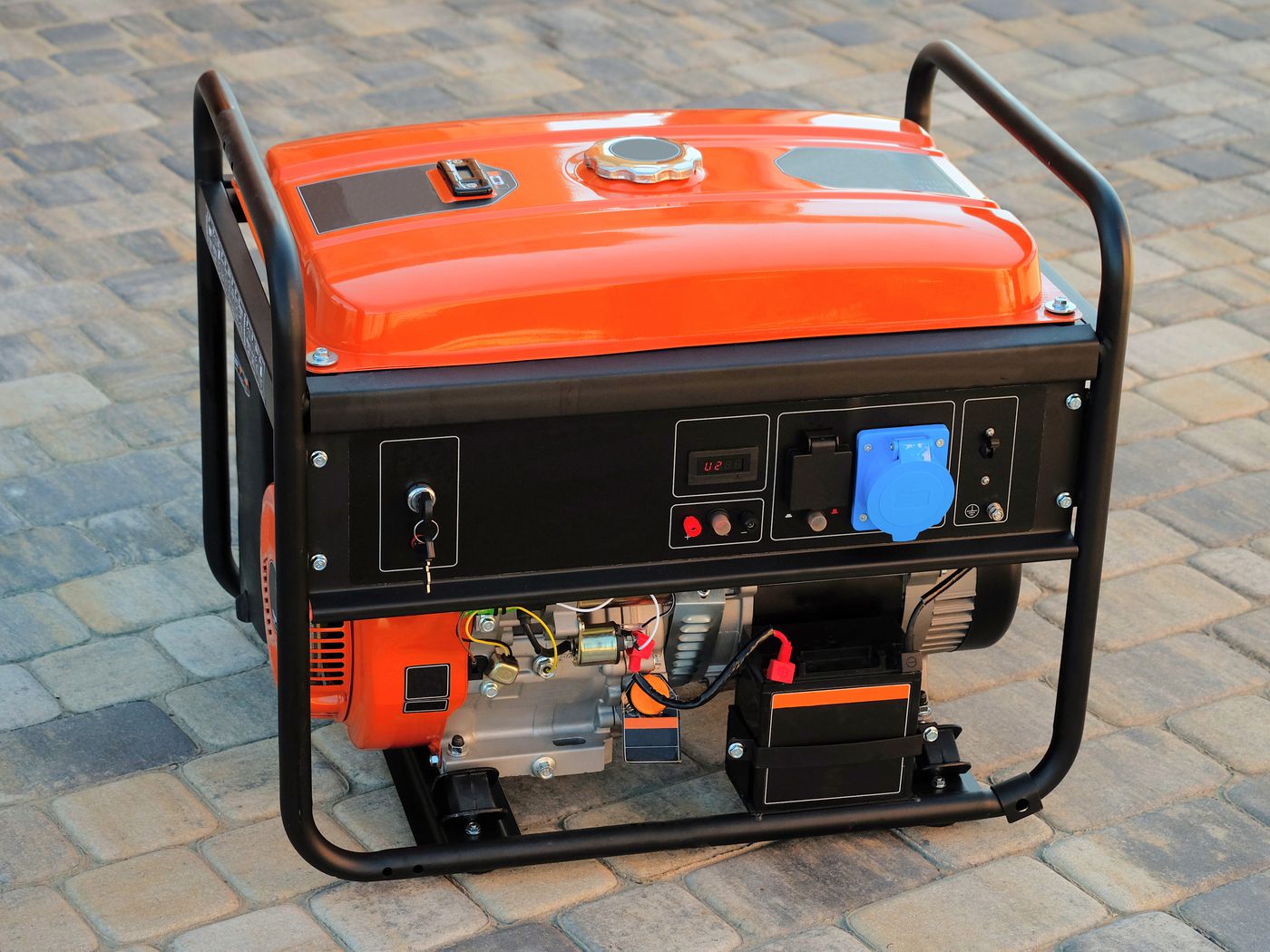
Materials
When choosing an outdoor generator storage solution, one of the first considerations to keep in mind is the material of the storage unit. It should be strong and durable enough to withstand various weather conditions and protect the generator from damage. Materials such as metal, wood, and plastic are all suitable options and can be found in various sizes.
Size
The size of the storage unit is also important when choosing an outdoor generator storage solution. It should be large enough to fit the generator and any other equipment that needs to be stored. For example, if the generator is being used for a camping trip, it may need to fit other camping supplies as well.
Accessibility
Finally, accessibility is also an important factor to consider when choosing outdoor generator storage. The unit should be easily accessible so that it can be used at a moment’s notice. If the generator is located in a remote area, the storage unit should be portable so that it can be moved to the desired location.
4. Ventilation
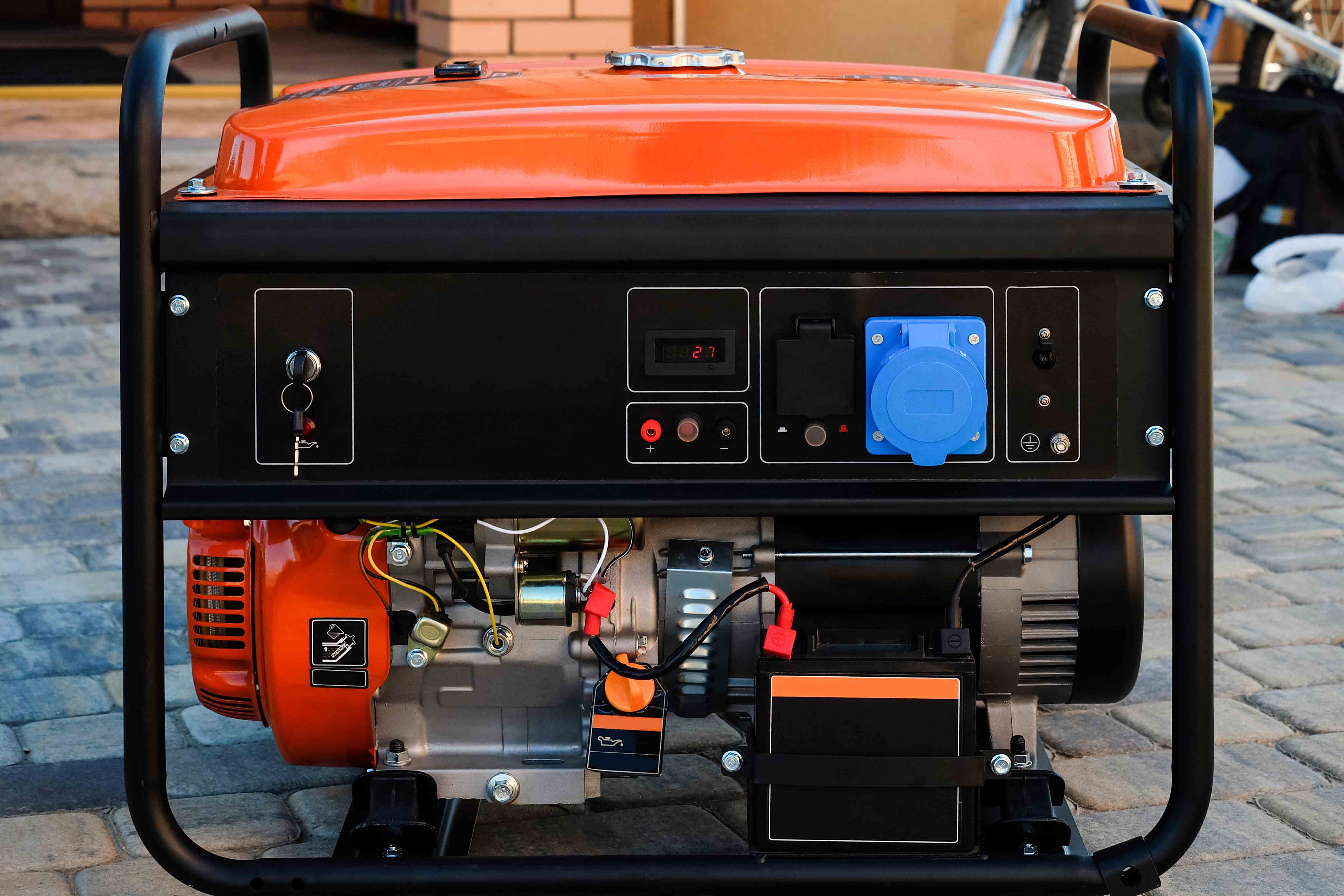
When storing an outdoor generator, it’s important to ensure that the generator is adequately ventilated. Without proper ventilation, the generator is at risk of overheating and becoming damaged. To ensure proper ventilation, the generator should be stored in an area that has plenty of air circulation and is free from debris or other objects that could block the air flow.
It’s also important to keep the generator away from any flammable materials or sources of heat, as the engine produces a considerable amount of heat that could cause a fire.
| Ventilation Type | Description |
|---|---|
| Natural | Generator should be placed in an open area where air can freely circulate. |
| Forced | A fan can be used to circulate air around the generator. |
The type of ventilation used depends on the location of the generator and the climate of the area. In an area with high humidity, a forced ventilation system may be needed to prevent condensation from forming. In an area with low humidity, a natural ventilation system may be sufficient.
It’s also important to ensure that the generator has access to fresh air. If the generator is stored in an airtight container, a ventilation system should be installed to ensure that the generator is receiving a steady supply of fresh air.
When it comes to outdoor generator storage, ventilation is key to ensuring the generator runs properly and safely. By taking the necessary precautions, you can ensure that your generator is protected from overheating and other damage.
5. Cost
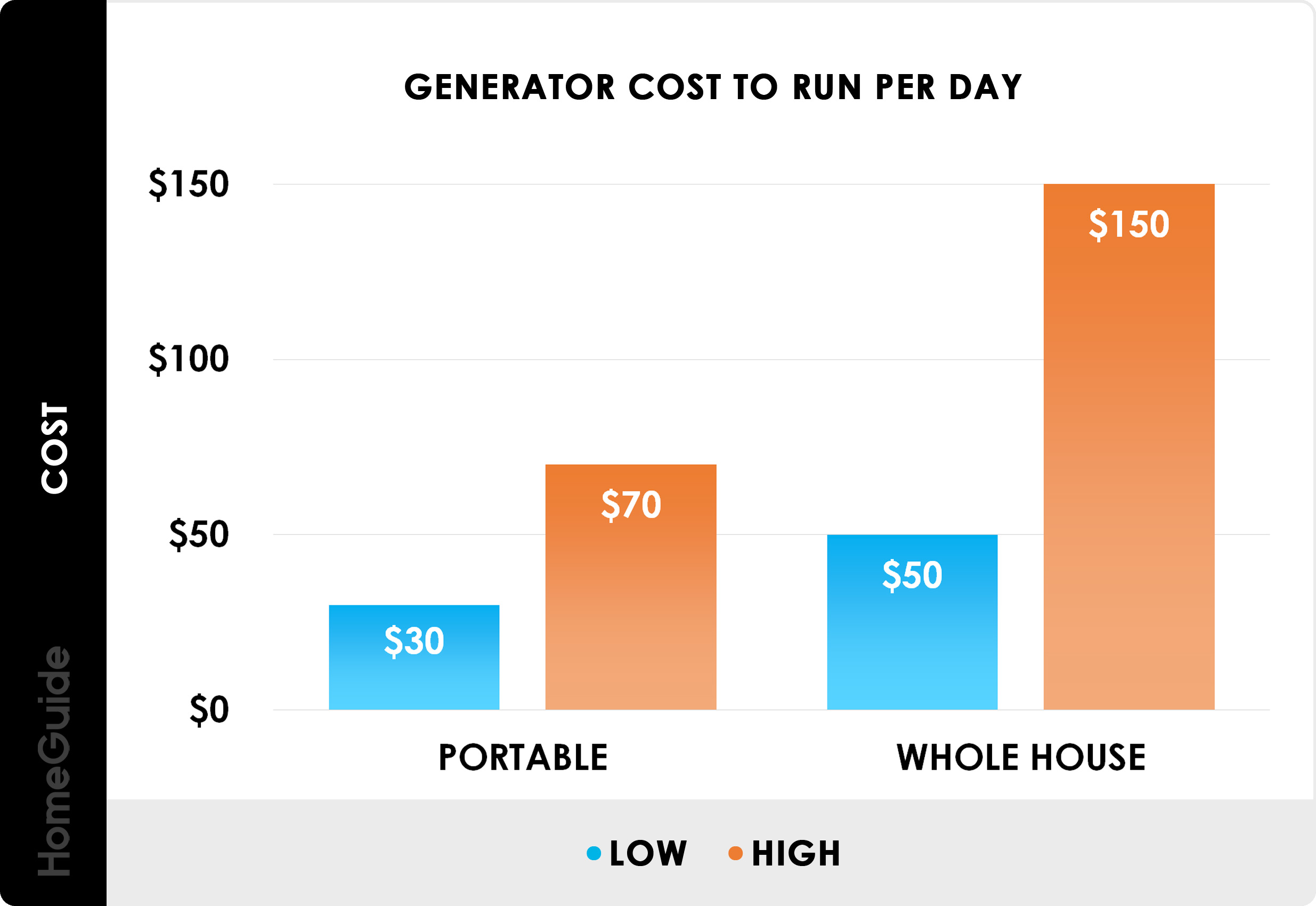
Outdoor generator storage can be a costly investment, but it can be worth it in the long run. Depending on the size and type of generator, the cost can range from a few hundred to a few thousand dollars. It is important to consider the size of the generator and the type of materials used for the storage unit when determining the cost.
For example, a small generator may require a basic storage unit made from plastic or wood, while a larger generator may require a more robust storage unit made from metal. The cost of the storage unit will also vary depending on the size and type of generator.
In addition to the cost of the storage unit, there may be additional costs associated with the installation of the storage unit. This may include the cost of the tools needed for the installation, as well as the cost of any additional materials that may be required.
| Storage Unit | Cost Range |
|---|---|
| Plastic/Wood | $200 – $500 |
| Metal | $500 – $2,000 |
Installation of Outdoor Generator Storage
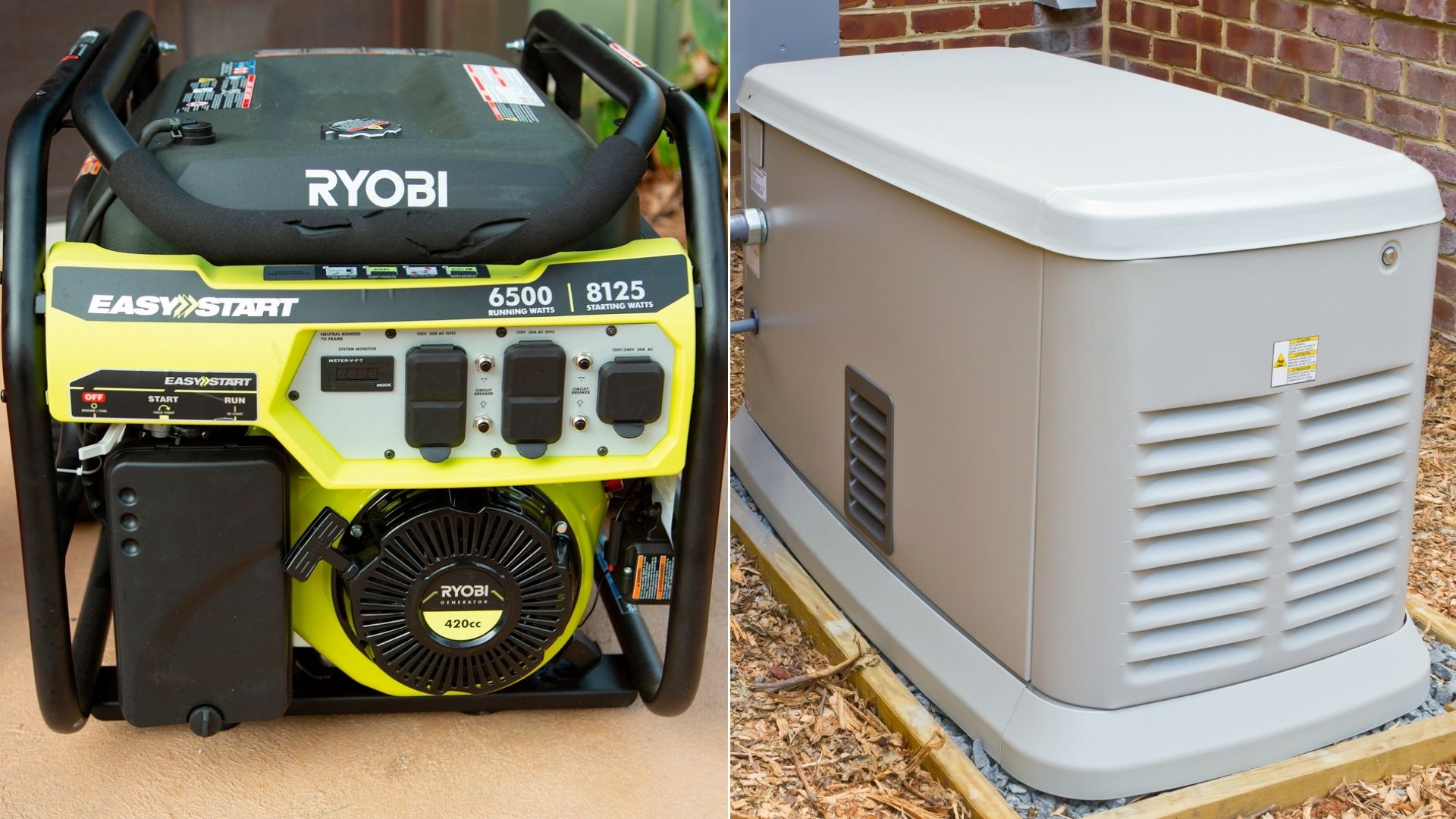
Outdoor generator storage is an important consideration for any home or business that uses a generator. The generator must be installed in a safe and secure environment, and proper installation is essential to ensure the generator runs correctly and efficiently. The following steps should be followed to ensure a successful outdoor generator storage installation.
First, select a suitable location for the generator. Consider the size of the generator, the type of fuel it uses, the climate of the area, and any other factors that may affect the generator’s performance. Make sure the generator is placed in a well-ventilated area that is not exposed to harsh weather.
Second, make sure the generator is securely mounted on a solid foundation. It is important to use heavy-duty anchor bolts and mounting brackets to ensure the generator is safely secured to the ground. Be sure to follow the manufacturer’s instructions for mounting the generator.
Third, connect the generator to the fuel source. This is typically done via a fuel line. If the generator uses natural gas, be sure to follow all local codes and regulations when installing the line.
Fourth, install any necessary safety devices. This includes any ground fault circuit interrupters, lockout/tagout switches, and other safety devices that are necessary for the safe operation of the generator.
Finally, test the generator before use. Turn on the generator and check for any signs of trouble such as smoke, sparks, or unusual noises. This will help ensure the generator is running correctly and safely.
By following these steps, you can ensure a successful installation of your outdoor generator storage. Be sure to take all necessary precautions when installing your generator to prevent any potential hazards.
Maintenance of Outdoor Generator Storage
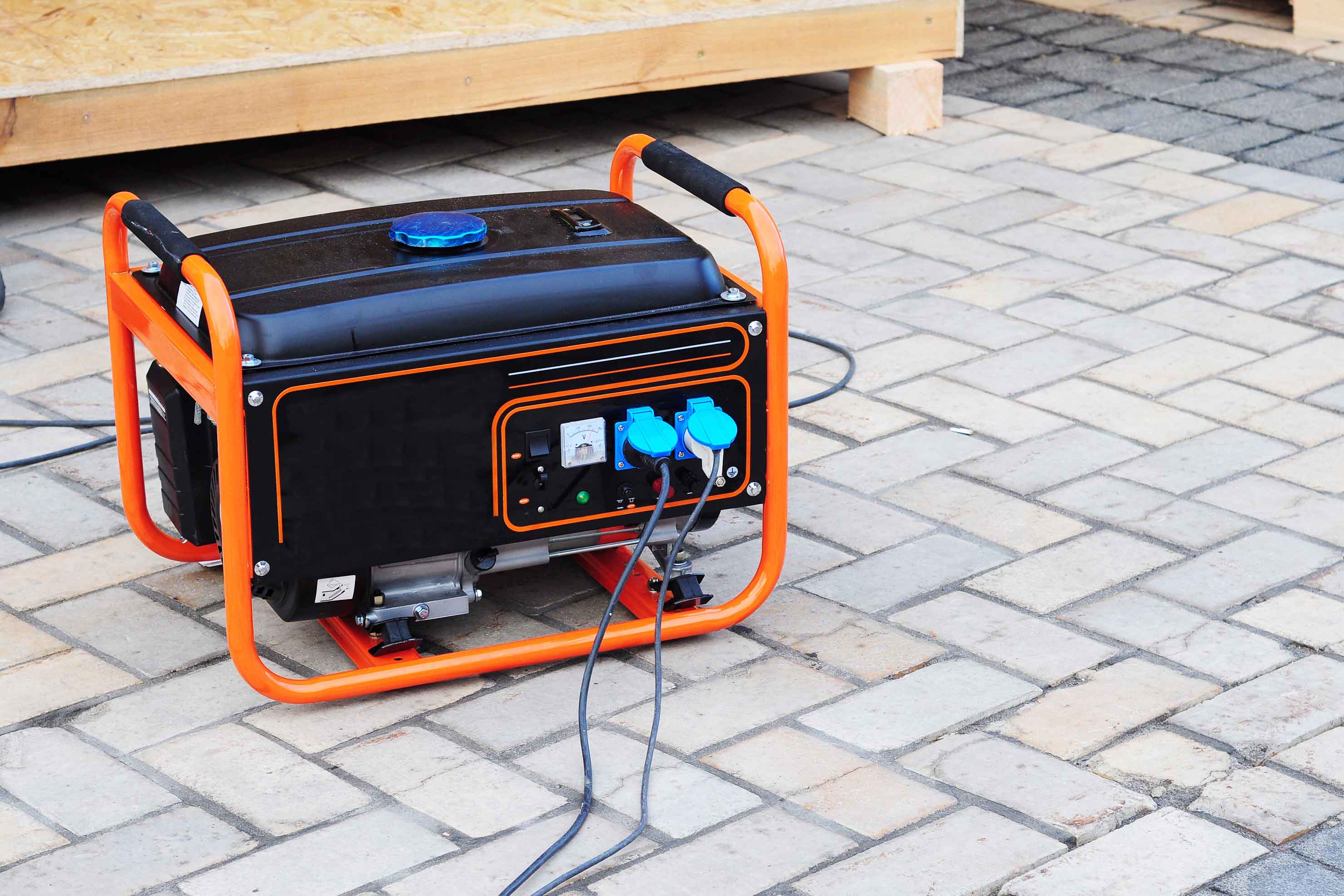
Outdoor generator storage requires proper maintenance to ensure its longevity and optimal performance. Proper care and maintenance of your generator can help you avoid costly repairs and keep your generator running smoothly. Here are some basic tips to help you maintain your generator.
Check the Fuel System
The fuel system is one of the most important components of your generator, and it needs to be checked regularly to ensure it’s in good working order. Inspect the fuel lines and filters for any signs of damage or wear and tear. If they are damaged, replace them immediately. Also, check the fuel tank to make sure it has enough fuel to run the generator.
Clean and Lubricate the Generator
To keep the generator running smoothly, it needs to be cleaned and lubricated regularly. Clean the exterior of the generator with a damp cloth and check for any dirt or debris buildup that could cause problems. Make sure to clean any buildup from the air filter and the generator’s cooling fans.
Lubricate the moving parts of the generator with a lubricant specifically designed for outdoor generators. This will help keep the generator running smoothly and reduce the risk of breakdowns.
Inspect the Electrical System
The electrical system of the generator needs to be inspected regularly to ensure it’s in good working order. Check the wiring for any signs of damage or wear and tear, and replace any damaged components. If the generator is not in use, make sure to disconnect all electrical wires from the generator to avoid any potential damage.
Check the Battery
The battery of the generator needs to be checked regularly to make sure it has enough charge. If the battery is low, charge it with a battery charger designed for outdoor generators. This will help keep the battery in good condition and help prevent any potential damage.
Check the Generator’s Oil Level
The oil in the generator needs to be checked regularly to make sure it’s at the right level. If the oil level is low, add more oil to the generator to keep it running smoothly.
Check the Generator’s Cooling System
The cooling system of the generator needs to be checked regularly to make sure it’s in good working order. Check the fan and radiators for any signs of damage or wear and tear, and replace any damaged components.
Perform Regular Maintenance
Regular maintenance is essential for keeping your generator in good working order and extending its lifespan. Make sure to perform routine maintenance on your generator, such as changing the oil and filters, checking the battery, and inspecting the electrical system.
Conclusion
Maintaining your outdoor generator storage is essential for keeping it running smoothly and avoiding costly repairs. Make sure to follow the maintenance tips outlined above to keep your generator in good working condition.
Tips and Tricks for Outdoor Generator Storage
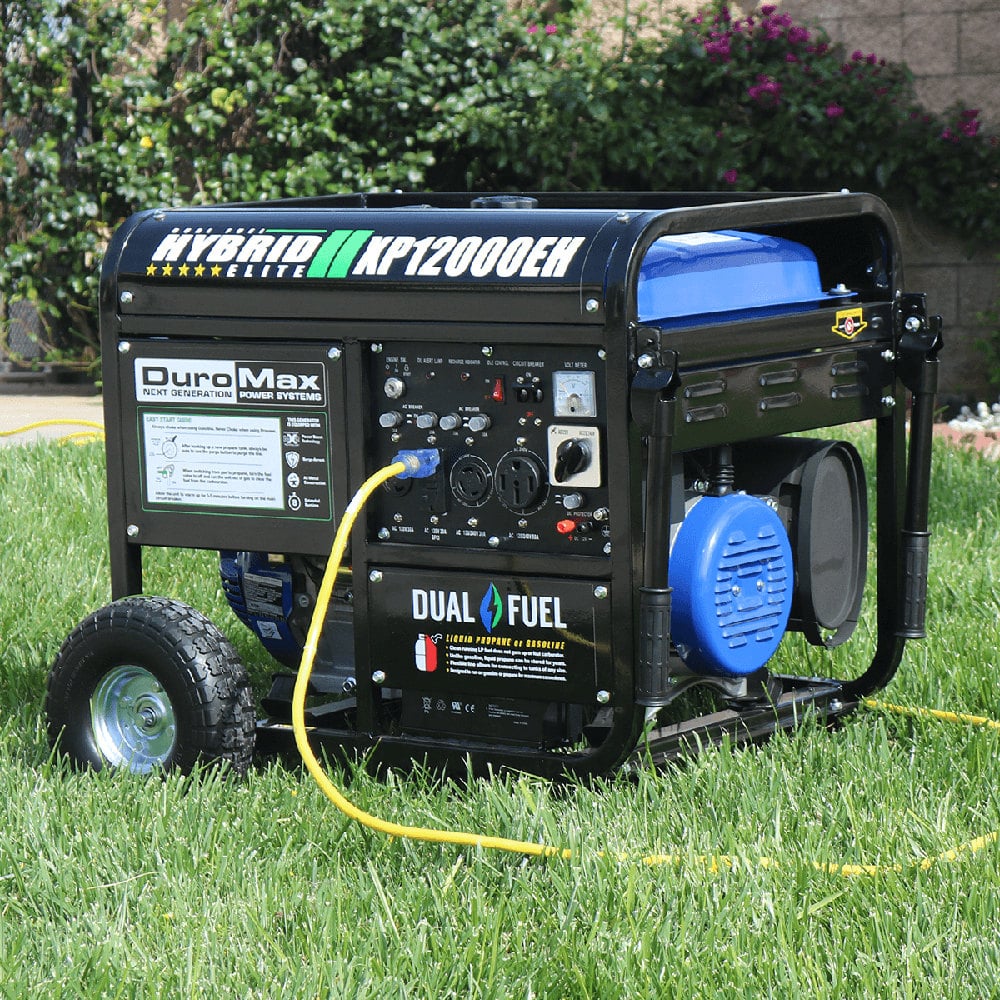
Storing a generator outdoors can be a daunting task, as it requires proper maintenance and protection from the elements. Here are a few tips and tricks to help you store your generator outdoors safely and securely.
Choose a Shelter
When selecting a shelter for your outdoor generator, make sure to choose one that is specifically designed to protect your generator from the elements. If the shelter is not designed for outdoor use, it is likely to be susceptible to damage from the sun, wind, rain, and other weather conditions.
Prepare the Generator
When storing a generator outdoors, it is important to prepare the generator for proper storage. Make sure to drain any fuel that is left in the tank, and also make sure to clean and lubricate any exposed parts. This will ensure that your generator is in good condition when you need it.
Check the Ground
When storing a generator outdoors, it is important to check the ground before setting up the generator. Make sure that the ground is level and free of any debris that could damage the generator. You should also make sure to check for any potential hazards, such as water puddles, that could cause your generator to malfunction.
Weatherproof the Shelter
Once you have chosen a shelter for your generator, it is important to make sure that it is properly weatherproofed. Make sure to add weatherstripping around the edges of the shelter, as well as adding a protective covering to the roof. This will help ensure that the generator is protected from the elements and will last for many years.
Secure the Generator
When storing a generator outdoors, it is important to make sure that it is securely fastened to the ground. This will help to prevent it from being stolen or damaged. You should also make sure to use a lock or other security device to ensure that the generator is secure.
Maintenance and Inspection
Finally, it is important to regularly inspect and maintain your generator when it is stored outdoors. Make sure to check the generator for any signs of wear and tear, as well as checking the oil and fuel levels. Regular maintenance will ensure that your generator is always in good condition and ready to use when you need it.
| Tips and Tricks | Description |
|---|---|
| Choose a Shelter | Select a shelter specifically designed for outdoor use. |
| Prepare the Generator | Drain fuel and clean and lubricate exposed parts. |
| Check the Ground | Make sure the ground is level and free of debris. |
| Weatherproof the Shelter | Add weatherstripping and a roof covering to the shelter. |
| Secure the Generator | Securely fasten the generator to the ground. |
| Maintenance and Inspection | Inspect and maintain the generator regularly. |
Common Questions about Outdoor Generator Storage
Outdoor generator storage offers a convenient and safe way to store your generator when it’s not in use. However, there are some common questions that arise when considering outdoor generator storage. Here are some frequently asked questions to help you make an informed decision.
What type of generator enclosure should I choose?
When selecting an outdoor generator enclosure, consider the size and type of generator you have and the climate in your area. You should also consider the environment where the enclosure will be placed, such as if it will be exposed to direct sunlight or rain. A waterproof enclosure is recommended for optimal protection.
What type of security features should I look for?
When choosing an outdoor generator enclosure, it’s important to consider security features. Look for enclosures that offer lockable doors, tamper-proof hinges, and reinforced steel construction. These features will help protect your generator from theft and unauthorized access.
How often should I perform maintenance on my generator?
It’s important to perform regular maintenance on your generator, regardless of whether you store it indoors or outdoors. Make sure to check the oil and filter levels, inspect the fuel lines and connections, and test the battery. This will help ensure the generator is in peak condition and ready for use when needed.
What ventilation should I consider for my generator enclosure?
Ventilation is an important consideration when storing a generator outdoors. Adequate air flow is necessary to prevent the build-up of toxic fumes and to help keep the generator cool. Look for an enclosure that offers adequate ventilation, such as louvered sides, a screened top, or a ventilated floor.
How should I store my generator’s fuel?
The fuel used in your generator should be stored in a cool, dry place, away from direct sunlight, heat, and moisture. Fuel tanks should be sealed and labeled clearly, and the fuel should be tested regularly to ensure it’s in good condition. In addition, fuel tanks should be kept securely locked to prevent unauthorized access.
Outdoor generator storage is a great way to protect your generator from the elements and ensure it’s ready for use when needed. By considering the common questions outlined here, you can make an informed decision about the type of generator enclosure and storage requirements that are best for your situation.
Frequently Asked Questions
1. What are the benefits of having a generator shed for a portable generator?
- A generator shed provides a secure and convenient storage solution for your portable generator, protecting it from the elements and from theft.
- The shed can be used to prevent accidents, such as fires caused by the generator being exposed to the elements in inclement weather.
- The generator shed can also be used as a sound barrier, reducing the noise of the generator and making it less intrusive to neighbors.
- The shed can also provide a neat and organized look to your outdoor space, and make it easier to maintain and service the generator.
- Finally, a generator shed can also increase the value of your property, as it provides a safe and secure storage solution.
2. What should I consider when choosing an outdoor generator storage solution?
When choosing an outdoor generator storage solution, there are a few things that should be considered:
- Size and capacity – What size generator are you looking to store? How much space do you have available? Is the storage solution big enough to accommodate your generator?
- Weather protection – What kind of protection does the storage solution offer against the elements? Look for a storage solution that is waterproof and/or resistant to extreme temperatures and UV radiation.
- Security – Is the storage solution secure enough to prevent theft? Can it be locked and/or secured with a chain?
- Durability – Is the material used in the construction of the storage solution strong and durable enough to protect your generator?
- Ease of use – Is the storage solution easy to access and use? Does it have features such as wheels or handles that make it easier to move?
- Cost – What is the total cost of the storage solution, including installation and any additional accessories?
By taking the time to consider each of these factors, you can ensure that you choose the best outdoor generator storage solution for your needs.
3. What are the best practices when storing a generator outdoors?
Storing a generator outdoors can be challenging, especially in inclement weather. To help ensure your generator’s longevity and performance, here are some of the best practices for outdoor generator storage:
- Store the generator in a sheltered area, such as a shed or garage, to protect it from the elements.
- Keep the generator away from windows, vents, and other openings that could allow moisture into the generator.
- Ensure there is proper ventilation to prevent the build-up of moisture and heat.
- Cover the generator with a waterproof tarp or cover to protect it from rain and snow.
- If the generator is going to be stored for an extended period of time, it is best to drain the fuel tank and run the generator until it is out of fuel.
- Regularly inspect and clean the generator to ensure that it is in good working order.
By following these best practices when storing a generator outdoors, you can help ensure that your generator is safe, secure, and ready to use when you need it.
4. What are the common risks associated with storing a generator outdoors?
Storing a generator outdoors can be convenient but it comes with its own set of risks. Here are some of the potential dangers associated with outdoor generator storage:
- Weather Damage: Rain, snow, and extreme temperatures can all cause corrosion and damage to your generator over time.
- Theft: Generators are valuable, and leaving them outside makes them vulnerable to theft.
- Fire Hazards: Gasoline and other flammable liquids used by generators can create danger if they spill or leak into the environment.
- Wildlife: Animals such as raccoons, mice, and rats can make their homes in your generator and cause damage.
- Ventilation Problems: Generators need proper ventilation to operate safely, and being outdoors can make it difficult to ensure this.
5. How can I ensure my generator is secure when using a generator shed?
Generator sheds are a great way to store your generator safely outdoors, but it is important to make sure your generator is secure. Here are some ways you can ensure your generator is secure when using a generator shed:
- Choose a shed that is designed specifically for generators. This will ensure that your generator is properly ventilated and is not exposed to any potential hazards.
- Install a heavy-duty padlock on your shed. This will help to deter potential thieves and keep your generator safe and secure.
- Make sure the generator is secured to the shed with heavy-duty chains or cable ties. This will make it difficult for anyone to remove the generator without your knowledge.
- Install a security system or camera in the shed. This will help to deter any potential thieves and help you keep an eye on your generator.
- Make sure the shed is located in a well-lit area. This will help to make it more difficult for anyone to access the generator without being detected.
By following these steps, you can ensure that your generator is secure when using a generator shed.
Conclusion
Outdoor generator storage is essential for ensuring that your generator is safe and secure from theft, vandalism, and other sources of damage. It is important to choose a storage option that fits your needs, as well as the size of your generator. When selecting a storage location, make sure it is away from flammable materials, and ensure that the storage is secure and out of reach of children and pets. Additionally, remember to check the generator periodically for any signs of wear and tear, and make sure that the fuel has not gone stale. Following these steps will help ensure that your generator remains safe and secure while in storage.
